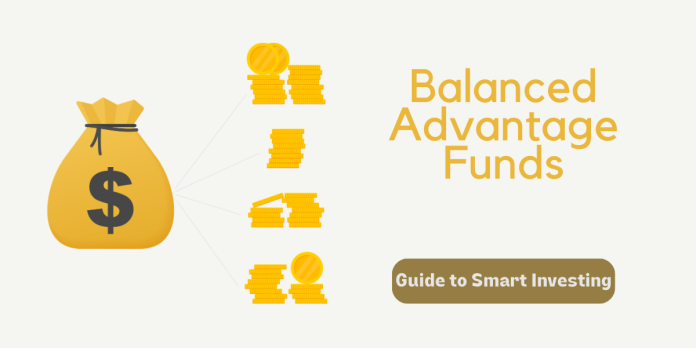Introduction
Balanced advantage funds represent a hybrid mutual fund category that combines investments in both equities and debt instruments. These funds are meticulously crafted to offer investors the dual benefits of potential capital appreciation and income generation while effectively managing risks.
How Balanced Advantage Funds Work
Balanced advantage funds employ a dynamic asset allocation strategy, where fund managers adapt the blend of equities and debt within the fund according to prevailing market conditions. For instance, in a bullish stock market, the fund manager may increase the allocation to equities. Conversely, during bearish phases, the equity allocation may be reduced. This dynamic approach aims to reduce risk and enhance returns.
The dynamic asset allocation strategy employed by balanced advantage funds serves two critical purposes: mitigating the impact of market downturns by diversifying across asset classes and seizing opportunities presented by market movements to optimize returns.
Benefits of Balanced Advantage Funds
Balanced advantage funds offer a host of advantages to investors:
- Diversification: Investors benefit from a well-rounded portfolio of diverse investments, reducing risk and improving overall returns.
- Asset Allocation: Dynamic asset allocation strategies are employed to adapt to market conditions, effectively managing risk and maximizing returns.
- Hands-Off Investing: Ideal for investors seeking a hands-off approach, as fund managers oversee asset allocation and rebalancing, relieving investors of this responsibility.
Risks of Balanced Advantage Funds
While balanced advantage funds offer numerous advantages, it’s essential to be aware of associated risks:
- Market Risk: These funds are still subject to market fluctuations, but diversification helps mitigate this risk.
- Interest Rate Risk: Balanced advantage funds can be affected if interest rates rise, though fund managers can adjust asset allocation to counteract this risk.
- Credit Risk: Exposure to credit risk means potential losses if bond issuers default, but fund managers typically select high-quality bonds to reduce this risk.
How to Choose a Balanced Advantage Fund
When selecting a balanced advantage fund, consider these key factors:
- Fund Manager: Research the track record and experience of the fund manager, seeking one with a successful history in managing such funds. However, the importance of fund managers has been reducing over the recent years with the trend of passive funds picking up.
- Investment Philosophy: Ensure the fund’s investment philosophy aligns with your own financial goals and risk tolerance.
- Performance: Examine the fund’s historical performance under different market conditions, keeping in mind that past performance doesn’t guarantee future results.
- Expense Ratio: Lower expense ratios mean a higher percentage of your investment goes into the market, potentially impacting your returns positively.
Read: What are Quantitative Mutual Funds
Additional Tips for Investing in Balanced Advantage Funds
- Start Small: If you’re new to balanced advantage funds, begin with a modest investment to minimize potential losses.
- Reinvest Dividends: Consider reinvesting dividends earned from your fund to foster long-term growth.
- Long-Term Investment: These funds are best suited for long-term investors, as the fund manager’s dynamic strategy can reduce risk and generate higher returns over extended periods.
Conclusion
Balanced advantage funds offer a compelling option for investors seeking diversified portfolios with the potential for both capital growth and income generation. However, comprehending the associated risks is paramount before venturing into these funds.


